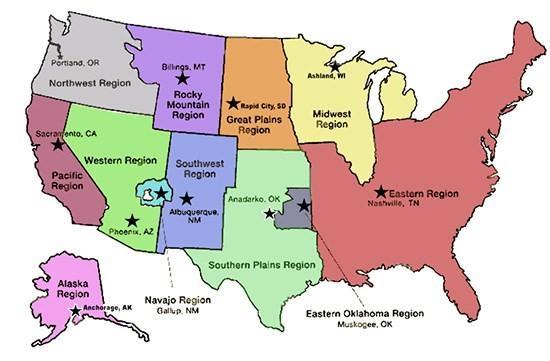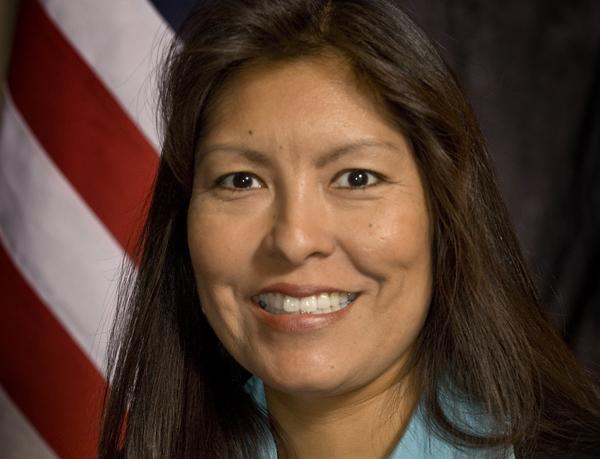Month: January 2014
Coast Salish Inheritance
Temp exhibit is a reflection of Tulalip’s living culture
By Niki Cleary, Tulalip News
The Hibulb Cultural Center and Natural History preserve is a place for the Tulalip people and our neighbors. Hibulb Senior Curator Tessa Campbell explained that the facility, especially the temporary exhibit, is dynamic and always changing just like the people who live at and visit Tulalip. The current temporary exhibit, Coast Salish Inheritance, will be on display through May 2014.
“[In the exhibit] you can see how our culture, how our teachings are still alive today,” she said. “They’ve been passed on and at the same time they’ve evolved. You can see just about every medium that’s out there: beadwork, carving, painting, mixed media and even kids’ artwork. There is also music, two tribal artists did music composition and the video portion. It really shows a good look into Tulalip artists today.”
Admission to the Hibulb Cultural Center is always free for Tulalip Tribal Members, for non-members admission is only $10 for adults with reduced rates for seniors, students and military. Children under five are free. The first Thursday of each month, admission is free to all visitors. For more information about the Hibulb Cultural Center visit the www.hibulbculturalcenter.org.
Photographing Native America – Matika Wilbur
by Monica Brown, Tulalip News Writer
Imagine using photography to change cultural stereo types of Native Americans in a society that currently glorifies the Native American as a tomahawk-wielding sports mascot, a feather clad underwear model, a provocative Halloween costume or a drunken advertising pun.

Matika Wilbur, a Tulalip and Swinomish native, developed Project 562 and is using her talent of photography to counteract these active and misconstrued perceptions.
“My project is dedicated to photographing every tribe in the U.S. to breakdown the historical inaccuracies and stereotypical ways that we are represented in mass media.”
Wilbur’s portraits depict the contemporary Native American in a generic setting; the portraits are in black and white with little distraction to put emphasis on the Native American as person within the evolving U.S. culture.
Wilbur, a former fashion photography major, as stated in Indian CountryToday, earned a bachelor’s degree in photography at Brooks Institute. Indian country stated that, “She had a change of heart after participating in a commercial shoot in Los Angeles. The resources expended to produce a single photo for a clothing ad — a rented house in Malibu, art director, hair and makeup person, publicist, three photographers, for a photo “I could have done for $5” — got her thinking: “This is what my life was going to be like. What kind of meaning did it have in the long run?””
“Can we relearn to see as human beings? Does the photographic image impact our lives and the lives of those around us and if it does can we use that image to encourage and inspire one another?” queries Wilbur in a recent TedX talk.
Currently in the fashion industry the Native American façade is being used in a sexual and/or irrelevant manner which debases the culture as it being attached to groups of people. There is a human disassociation that generates from these images; one that causes outsiders to view these people as objects rather than a culture.
“My hope is that when the project is complete, it will serve to educate the nation and shift the collective consciousness toward recognizing our own indigenous communities,” Matika quoted in her project blog at matikawilbu.com. The end result will be a compilation of portraits of the contemporary Native American instead of “the leathered and feathered vanishing race” stereo type of Native American.
For phase one of her project, Wilbur was able to raise $35,000 through Kickstarter to help fund her journey. This year’s goal, for phase two, that bar has been set higher at $54,000 to be raised by Feb 14th 2014.

For information about Project 562 and to donate visit her kiskstarter.com page or Matikawilbur.com. Donators will receive rewards based on the amount they pledge. Rewards range from stickers and clothing labeled Project 562 to having the opportunity to spend time with photographer Matika Wilbur while she is on the road.
Currently, Wilbur is on the road in Arizona traveling by car to each reservation. In the past year she has photographed 173 tribes with just under 400 left. On May 17th and 23rd of this year a collection of Wilbur’s works will be on display at the Tacoma Art Museum and she has stated she will be in attendance to the art showing.
Wilbur has been taking photographs for over 10 years and some of her inspiration comes from photographers such as Phil Borges, Dorothea Lange and Coast Salish artists Shaun Peterson and Simon Charlie whose works she experienced through her mother’s La Conner art gallery.
Project 562 is estimated to be a 3 year project with a deadline set for the end of 2015. Upon conclusion, the compilation or portraits will be viewable across the U.S. Wilbur looks forward to being able to come home and work within her tribal community when her project is complete.
Cherokee students receive 1,000 donated books from Chattanooga school

Source: The Cherokee Nation News
TAHLEQUAH, Okla. — Four elementary schools within the Cherokee Nation’s jurisdiction received more than 1,000 books earlier this month from Chattanooga, Tenn. fourth graders, who held a book drive after learning about the tribe’s history and removal on the Trail of Tears.
The East Brainerd Intermediate School students formed a project to honor about 16,000 Cherokees who 176 years ago made the 1,000-mile journey from the ancestral homeland to present-day Oklahoma. With help from their teacher, the students organized a school-wide book drive and then shipped 96 boxes of books to schools in the Cherokee Nation.
“I was touched that a group of young children would put together such a heartfelt service learning project,” said Shelley Butler-Allen, who manages the tribe’s Johnson O’Malley program and coordinated with East Brainerd school. “The generosity by the students in Chattanooga is truly admirable. Hundreds of students here in the Cherokee Nation will benefit from their good deed.”
A private shipping company in Chattanooga volunteered to deliver the books to Belfonte School in Sequoyah County, Bell School in Adair County, and Kenwood and Oaks Mission schools in Delaware County. The four schools have a high percentage of Native American students.
“They’re really polite to think of us and send us good books to read,” said Oaks sixth-grader Christian Sequichie.
Sequichie picked out a donated James Patterson novel to read since he had read two others in the series.
The schools are sorting through the books, which will then be used for classroom reading.
“It’s nice to see them get excited about paperbacks when we’re moving into a digital world,” Oaks Mission Counselor and Principal Barbara Tucker said. “The students will really enjoy these.”
Northwest Starfish Experiments Give Scientists Clues To Mysterious Mass Die-offs
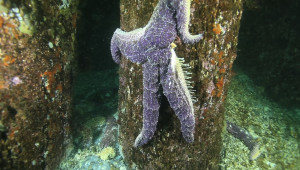
By Katie Campbell, OPB
MUKILTEO, Wash. — Near the ferry docks on Puget Sound, a group of scientists and volunteer divers shimmy into suits and double-check their air tanks.
They move with the urgency of a group on a mission. And they are. They’re trying to solve a marine mystery.
“We need to collect sick ones as well as individuals that appear healthy,” Ben Miner tells the divers as they head into the water.
Miner is a biology professor at Western Washington University. He studies how environmental changes affect marine life. He’s conducting experiments in hopes of figuring out how and why starfish — or sea stars, as scientists prefer to call the echinoderms — are wasting away by the tens of thousands up and down North America’s Pacific shores.
Watch the video report:
Scientists first started noticing sick and dying sea stars last summer at a place called Starfish Point on Washington’s Olympic Peninsula. Then reports came from the Vancouver Aquarium in British Columbia, where diver biologists discovered sea stars in Vancouver Harbour and Howe Sound dying by the thousands.
It’s been coined “sea star wasting syndrome” because of how quickly the stars deteriorate. Reports have since surfaced from Alaska to as far south as San Diego, raising questions of whether this die-off is an indicator of a larger problem.
“It certainly suggests that those ecosystems are not healthy,” Miner said. “To have diseases that can affect that many species, that widespread is, I think is just scary.”
At first only a certain subtidal species, Pycnopodia helianthoides, also known as the sunflower star, seemed to be affected. Within a day or two of showing symptoms, the fat, multi-armed stars melted into piles of mush.
Then it hit another species, Pisaster ochraceus, or the common, intertidal ochre star. Then another. In all, about a dozen species of sea stars are dying along the West Coast. Sea star wasting has also been reported at sites off the coast of Rhode Island and North Carolina. But researchers say until they’ve identified the cause of the West Coast die-offs, they can’t confirm any connection between these outbreaks.
Scene From A Horror Film
Scuba diver Laura James was one of the first to notice and alert scientists when the morning sun star, Solaster dawsoni, and the striped sun star, Solaster stimpsoni, began washing up on the shores of Puget Sound near her home in West Seattle.
“I thought, ‘This is just getting a little too close for comfort, I need to go see what’s going on. And I need to document it,’” said James, an underwater videographer.
She decided to take her camera to a popular West Seattle dive spot, a place she knew to be a home to a rainbow of starfish. Underwater James discovered a scene from a horror film.
“There were just bodies everywhere,” James said. “There were just splats. It looked like somebody had taken a laser gun and just zapped them and they just vaporized.”
She returned the site weekly, tracking the body count. At first, young stars seemed to be hanging on, a sign of hope that the next generation might be spared, but then even the smallest succumbed.
James has been diving in Puget Sound for more than two decades and says she’s never seen anything like it.
“People always ask me, ‘Do you see any big difference between now and when you started?’” she said. “I’ve seen some subtle differences, but this is the change of my lifetime.”
Reports from recreational divers like James have made it possible for scientists to track the ebb and flow of the syndrome. That’s what led Miner and his dive team to Mukilteo — a place where sea stars showing initial symptoms could be gathered.
“It turns out that you just need a lot of people out looking to be able to detect the spread,” Miner said.
Miner’s team surfaced, laden with 20 giant orange sunflower stars. They gathered stars that appeared healthy and others that had lesions and weren’t acting normal -— unnaturally twisting their arms into knots.
Miner trucked the stars to an aquarium-filled lab and placed one sickly star in with one healthy looking star. He also set up tanks containing only healthy-looking stars for comparison.
Then he watched to see what would happen.
Within a few hours, the sick stars started ripping themselves apart. The arms crawled in opposite directions tearing away from the body. While starfish have the ability to lose their arms as a form of defense, these starfish were too sick to regenerate their arms. Their innards spilled out and they died within 24 hours.
As for the healthy looking stars, Miner said they didn’t show symptoms anymore rapidly by being in the same tank with sickly stars.
A few weeks later divers returned to Mukilteo to find that most of the sea stars there have died. Miner concluded that all of the stars his team had collected were likely already infected just experiencing varying stages of illness. His team has since continued other infectiousness experiments collecting stars from other areas of Puget Sound where the disease hadn’t yet surfaced.
One such place was San Juan Island, part of an archipelago in the marine waters of Washington and British Columbia.
An Opportunity For Science
“We’re holding steady here and we’re not sure why,” said Drew Harvell, a marine epidemiologist from Cornell University who has studied marine diseases for 20 years. She teaches an infectious marine disease course at the University of Washington’s Friday Harbor Labs on San Juan Island and was at the labs when the disease broke.
Harvell immediately recognized the die-offs as an important opportunity for science. Marine organisms are often plagued by disease outbreaks, she explained, but seldom are scientists able to identify the exact cause.
“We have a problem of surveillance for disease in the ocean because they’re out of sight and out of mind,” Harvell said.
For the past few months, Harvell has been coordinating a network of scientists on both coasts who received rapid response funding from the National Science Foundation to investigate the die-offs. The team has established a website and map run by Pete Raimondi from the University of California Santa Cruz. It’s one of the fastest-ever mobilizations of research around a marine epidemic.
“This is an opportunity for understanding more about the transmission and rates of disease in the ocean, so it’s important that we gather the right kinds of data,” Harvell said.
In her lab, Harvell anesthetizes a healthy sea star before cutting off one of its arms and slipping it into a sterile bag. She’s sending samples to Cornell where her colleague Ian Hewson, a microbial biologist, will compare them with samples of sick sea stars from along the West Coast.
Using cutting-edge DNA sequencing and metagenomics, Hewson is analyzing the samples for viruses as well as bacteria and other protozoa in order to pinpoint the infectious agent among countless possibilities.
“It’s like the matrix,” Hewson said. “We have to be very careful that we’re not identifying something that’s associated with the disease but not the cause.”
Ruling Out Possible Culprits
In the search for what’s causing this sea star die-off, it’s important for scientists to rule things out. Some have suggested that these die-offs could be linked to low oxygen levels in the water and environmental toxins entering the water through local runoff. Yet this seems unlikely, they say, because these conditions would normally impact a wider array of animals, not just sea stars.
Others have pointed out that marine die-offs in the past have been linked to larger environmental factors like climate change and ocean acidification. Warming waters and changing pH levels can weaken the immune systems of marine organisms including sea stars, making them more susceptible to infection.
Some have asked whether radiation or tsunami debris associated with the Fukushima disaster could be behind this die-off. But scientists now see Fukushima as an unlikely culprit because the die-offs are patchy, popping up in certain places like Seattle and Santa Barbara and not in others, such as coastal Oregon, where wasting has only been reported at one location.
Others have wondered if a pathogen from the other side of the world may have hitched a ride in the ballast water of ocean-going ships. Scientists say this fits with the fact that many of the hot spots have appeared along major shipping routes. However, the starfish in quiet Monterey Bay, Calif. have been hit hard, whereas San Francisco’s starfish are holding strong.
But at this point, there’s no evidence to entirely confirm or entirely rule out these hypotheses.
A Sea Without Stars
Sea stars are voracious predators, like lions on the seafloor. They gobble up mussels, clams, sea cucumbers, crab and even other starfish. That’s why they’re called a keystone species, meaning they have a disproportionate impact on an ecosystem, shaping the biodiversity of the seascape.
“These are ecologically important species,” Harvell said. “To remove them changes the entire dynamics of the marine ecosystem. When you lose this many sea stars it will certainly change the seascape underneath our waters.”
Because the die-offs are patchy, scientists aren’t concerned that sea stars will be wiped out entirely. But there’s no end in sight and the disease continues to spread.
“We may still be at the very early stages of this. We don’t really know,” Harvell said. “But it’s as important as ever right now, that we’re monitoring to know where the disease hasn’t been yet and when it first hits.”
New experiments in Washington state started this week to test possible infectious agents. The network of scientists collaborating on this project hope to make an announcement in a few months.
The Intricate Beadwork of Jackie Larson Bread [10 Pictures]
Jackie Larson Bread is a beadworker from the Blackfeet Reservation in Browning, Montana, who currently lives in Great Falls. She won the Best in Show prize at the 2013 SWAIA Santa Fe Indian Market for “Memory Keeper,” a beaded hatbox featuring members of her family and her tribe. Shortly after the win, she discussed her work with an ICTMN correspondent.
How did you come to be one of the Native art world’s most prominent beadworkers?
I have been beading all my life, since childhood. My grandmother, who passed away before I was born, beaded. So I have always been interested in how it was done, and taught myself the techniques by studying her items, and the beadwork done by the ladies of my tribe. Among the Blackfeet, everyone knows the basic techniques. When I was 14, I started to work at the Museum of Plains Indians, which I continued to do for ten summers, where I was amazed by the beadwork, so I learned even more techniques. Then I attended the Institute of American Indian Art, in Santa Fe, to study painting and printmaking. I wanted to figure out how to introduce beadwork, because I like the mix of traditional and contemporary imagery, using old photographs. First, I did Sitting Bull and Geronimo, then photos of our people — 90% of what I do is about the Blackfeet, telling what we look like, sharing our homes and designs. It takes so many hours that you have to be really passionate — it is time consuming! But I will always continue to do beadwork, even with the time factor, because I like it so much.

Is there a specific Blackfeet aesthetic you need to follow, or are you free to choose whatever you like in terms of colors, designs, and subjects?
I used to confine myself to traditional ideas of beadwork, but now I do what I feel comfortable with — though I do not show any ceremonial things. I stay with what is right to tell. I share the lodges, the tipi designs.
Like the pictures of your family?
Yes, my dad’s aunts and uncles. I like to look through photos of our family members. Finding someone new is exciting — I would show the picture to my father, and he would explain how we are related to the person.

Where do you usually show?
I show at Indian Market in Santa Fe, at the Cherokee Art Market in Tulsa, in Sioux Falls, South Dakota, in Tucson, and in Montana.
And now you’ve won Best in Show at Santa Fe Indian Market — probably the most prestigious award a contemporary Native artist can receive — after how many years?
I’ve showed for 15 years! I love coming to Santa Fe, and looking at what everybody does. It’s amazing. So to be recognized Best of Show is astounding, it’s the hugest honor. I am so happy I won, after 15 years.








Read more at http://indiancountrytodaymedianetwork.com/2014/01/29/intricate-beadwork-jackie-larson-bread-10-pictures-153329
City responds to AG’s opinion on marijuana businesses

— image credit: Courtesy photo.
By Kirk Boxleitner, Marysville Globe
MARYSVILLE — A recently released opinion from the Washington State Attorney General’s Office ties into the city of Marysville’s pending decision on how to address the potential establishment of marijuana businesses within the city’s limits.
In response to a request from Sharon Foster, chair of the Washington State Liquor Control Board, the office of Attorney General Bob Ferguson released a formal opinion on Thursday, Jan. 16, regarding local ordinances affecting new marijuana businesses in Washington.
The opinion states, “Under Washington law, there is a strong presumption against finding that state law preempts local ordinances. Although Initiative 502 establishes a licensing and regulatory system for marijuana producers, processors and retailers in Washington state, it includes no clear indication that it was intended to preempt local authority to regulate such businesses. We therefore conclude that I-502 left in place the normal powers of local governments to regulate within their jurisdictions.”
Grant Weed, who serves as the city attorney for the city of Marysville, sounded a qualified note of optimism, even as he sought to clarify what this development actually means for the city.
“The Attorney General’s opinion is just that — an opinion,” Weed said. “It’s not legally binding, and while the courts tend to give deference to the Attorney General’s opinions, neither the courts nor the cities of the state are bound to them. That being said, the Attorney General’s Office has very skilled lawyers whom I don’t doubt answered many questions that were posed to them about this issue, so I’m not questioning this outcome, which gives the cities of Marysville and Arlington guidance on the options that are available to them.”
While Weed emphasized that no final decision has been made regarding the production, processing or sales of marijuana in the city of Marysville, he did acknowledge that the city’s Planning Commission voted by a 4-to-2 margin on Tuesday, Jan. 14, to recommend to the Marysville City Council that they prohibit all three within the city limits.
Marysville City Council member Steve Muller brings with him a certain measure of experience in such affairs, since he previously served as a member of the Planning Commission, but he was not inclined to either second-guess the Planning Commission’s judgement or even offer a definitive opinion of his own yet.
“There’s still a lot of gray areas here, and I wouldn’t want to see them worked out in Marysville’s backyard,” Muller said. “I don’t know how this all will fall out. I do question some of the assumptions about the tax revenues that this will generate, because if the product winds up costing more, it could become less competitive with what’s sold on the streets. This is a new industry, so we’re still seeing how this will play out. My position is, if we’re going to do something, let’s take the time to do it right the first time.”
Kamille Norton is the newest Marysville City Council member, having been appointed in February and elected in November of last year, and she sounded an even more deliberately neutral note than Muller.
“I’m waiting to review the Planning Commission’s recommendation for myself, and until then, I’m staying open-minded,” Norton said. “I do think the interim moratorium was the correct course of action to allow us time to study and explore this issue.”
Norton reported having spoken to a number of citizens and business owners on this subject, and regardless of their opinions, she described them as passionate about the matter.
While no set date has been released yet for the Marysville City Council to decide on this issue, Weed predicted it would be scheduled within the next several weeks, in February or March at the latest.
In 2012, I-502 passed statewide with 55.7 percent “Yes” votes. Locally it received 178,669 “Yes” votes out of 327,303 votes cast, or 54.59 percent of the vote in Snohomish County, and Marysville voters approved it by a slightly narrower margin, with 13,037 “Yes” votes out of 25,523 votes cast, or 51.07 percent of the vote.
Healthy Hearts, Healthy Minds Project is looking for participants
Finally! Indian Country Gets Its Labor Force Report
The Interior Department has published the latest report on the American Indian population and labor force, updating and improving on the previous report that was published in 2007 with data from nine years ago.
The 2013 American Indian and Labor Force Report was published January 16 and sent to Congress as mandated by Public Law 102-477– the Indian Employment, Training, and Related Services Demonstration Act of 1992.
The 151-page report presents findings from the 2010 Labor Force Survey of American Indians and Alaska combined with statistics produced by the 2010 U.S. Census–the most recent year for which adequate statistics were available. The data is based on populations of American Indians and Alaska Natives living on or near the service areas of federally recognized tribes. It doesn’t count members of federally recognized tribes who are living far away from federally recognized tribes’ areas – one of several complications created by data limitations.
Spoiler alert: This report full of statistical tables and charts is not your relaxing bedtime easy-to-read government report (if indeed such a report exists).
Attention government policy wonks: This one’s for you.
Some of the report’s main findings are:
— Approximately 28.1 percent of the Native population is below 16 years of age, with slightly more boys than girls. Approximately 64.8 percent is between16 and 64, with slightly more females. Those ages 65 and older represent only 7.1 percent of the population, with more women than men (4.0 percent versus 3.1 percent).
— About 50 percent of all the Native Americans studied, who are 16 years or older, are employed either full or part time in civilian jobs.
— Approximately 21 percent of all Native American employees work for a government (federal, state, local, or tribal).
— In some states, less than 50 percent of Native Americans 16 years or older among those studied are working.
— An estimated 23 percent of all Native American families in the United States in 2010 earned incomes that are below the poverty line.
— The highest estimated rate of poverty is in South Dakota, with 43-47 percent of Native American families in 2010 earning incomes below the poverty line.
The report is produced and published by the Bureau of Indian Affairs (BIA) under Assistant Secretary for Indian Affairs Kevin Washburn, who had promised its completion in 2013. The two-week delay in publication was caused in part by the two-week government shutdown last October.
RELATED: Legal and Political Questions Surround Interior’s Decision Not to Release Tribal Jobs Survey
“It was a tough year with the government shut down and sequestration so everything suffered a bit and, quite frankly, this report is quite a challenge,” Washburn told Indian Country Today Media Network.
Washburn said he hopes the report, together with other data, will be useful in determining relative needs for resources in different regions across Indian country. But “[I]t will always necessarily be a historical document. We simply do not have the staff to produce up-to-the-minute data, and the report is called for only once every two years. That said, it can give a general impression of relative need.”
The Interior Department came under fire by Congress last summer for the delay in publishing the report. The report is supposed to be published every two years, but the department didn’t produced a report in 2009 or 2011. Washburn, who was appointed in late 2012, got the report out in a little over a year.
RELATED: Congress Investigating Interior on Missing Tribal Jobs Reports That Broke Law
RELATED: Senators Rebuke Interior on Missing Tribal Jobs Reports
The law mandating the report doesn’t provide funding for it. One full-time employee – an economist – was assigned the task of producing the report. “It would take a small army of researchers to capture all the nuances so we are limited. The idea is to have higher quality data produced and this report does have higher quality data than previous reports because we were much more careful about the methodology.”
But it’s a question of priorities, according to Washburn. Although the report is “not unimportant,” Washburn said he didn’t want to pull human resources from other important aspects of the BIA’s mission “and I’m not sure Congress would like us to. I don’t think Congress wants us to be a statistical agency. I think it wants us to provide services to Indian people. I think it’s going to be hard for us to regularly produce high quality statistical reports.”
So why not hand the task over to the Census Bureau or Labor Department with their armies of researchers with expertise in statistics?
“I’m not authorized to do that,” Washburn said.
Until Congress considers such a hand-over, the BIA will consult more with Indian country “to find how they think we could be doing this report more effectively… We have an obligation if we produce a report there has to be some integrity to it and a certain level of quality is required,” Washburn said. “And that’s difficult to achieve with our limited resources.”
Read more at http://indiancountrytodaymedianetwork.com/2014/01/29/finally-indian-country-gets-its-labor-force-report-153303
Humetewa Close to Becoming First Female Native on Federal Bench
Hopi citizen Diane Humetewa smiled through a positive nomination hearing before the Senate Judiciary Committee on January 28 in her effort to be confirmed as a U.S. district judge in Arizona.
President Barack Obama nominated Humetewa to the position in 2013 after his administration previously forced her to step down from a U.S. attorney position in Arizona in 2009. At that time, the president chose Dennis Burke to take her position, but Burke resigned in August 2011 after admitting to leaking information about a federal agent. Humetewa went on to become a professor and lawyer at Arizona State University.
RELATED: Obama Nominates Native American Woman to Federal Court
Many in Indian country were glad that Obama decided to give Humetewa a second look, this time to become the first female Native American to serve on the federal bench. She would be only the third Indian to do so in history if confirmed to the position by the full Senate.
Judging from support given to her by both Democratic and Republican senators at her nomination hearing, she will likely easily pass the committee, and then her nomination will proceed for consideration by the full Senate.
One of Humetewa’s main champions is Sen. John McCain (R-Arizona) who recommended her for both her previous U.S. attorney position and for the federal judgeship. The senator, whom she previously worked for when he led the Senate Committee on Indian Affairs, introduced her with supportive remarks at the confirmation hearing.
“It has been said that the Arizona bench ‘would be enriched by a member who reflects the community it serves.’ With that in mind, I am particularly excited about our third nominee, Diane J. Humetewa, also to the District of Arizona, in Phoenix,” McCain said. “Ms. Humetewa’s nomination is truly historic: Being a member of the Hopi Nation, if Ms. Humetewa is confirmed, she would be the first Native American woman to ever serve on the federal bench.
“Ms. Humetewa’s service to the Hopi Nation, which includes work as prosecutor and an appellate court judge to the tribe, runs deep and has remained a cornerstone of her career,” McCain added. “She is also a long-time advocate for victim’s rights, which can be traced back to her service as a victim advocate before she attended law school.”
McCain’s support for Humetewa serves as a stark contrast to his criticism of the president’s nomination of Cherokee citizen Keith Harper to become a U.S. representative to the United Nations Human Rights Council in Geneva. Harper’s nomination stalled in the Senate last December due partly to McCain’s concerns about Harper’s human rights record, but Harper was re-nominated earlier in January to the same position by the president.
RELATED: McCain Prompts New Questions and Investigations Involving Harper’s U.N. Nomination
Sen. Mazie Hirono (D-Hawaii), who chaired the hearing, said that she was impressed that McCain and committee member Sen. Jeff Flake (R-Arizona) worked in a bipartisan fashion with the White House to help fill several Arizona judicial vacancies.
Humetewa said at the hearing that she was very pleased to be joined by family members, friends and colleagues. She added that her parents were watching the hearing via webcam from back home on the Hopi reservation.
In response to a question from Hirono regarding how her past judicial work with the Hopi Tribe would help her in this position, Humetewa said that she learned to be objective and timely in her decision making during her time with that tribal court.
In response to a question from Flake on the implementation of pro-tribal elements of the Violence Against Women Act and the Tribal Law and Order Act, Humetewa noted that both laws are in their infancy, but she said she looks forward to working with tribes that take on the increased jurisdictional opportunities offered under those laws.
Also in response to a question from Flake, Humetewa noted that she helped prepare a 2007 report by the Native American Subcommittee of the U.S. Sentencing Commission that found disparities in the application of sentencing guidelines to Native Americans. Penalties were harsher for Indians who committed assaults in Indian country versus non-Indian who were sentenced in state courts for similar assaults, she testified. If sentencing guidelines are to be modified in the future, she said tribal consultation would be important to achieve.
Flake, impressed with Humetewa’s responses, said he was delighted by her “trailblazing way.”
Read more at http://indiancountrytodaymedianetwork.com/2014/01/29/humetewa-close-becoming-first-female-native-federal-bench-153320


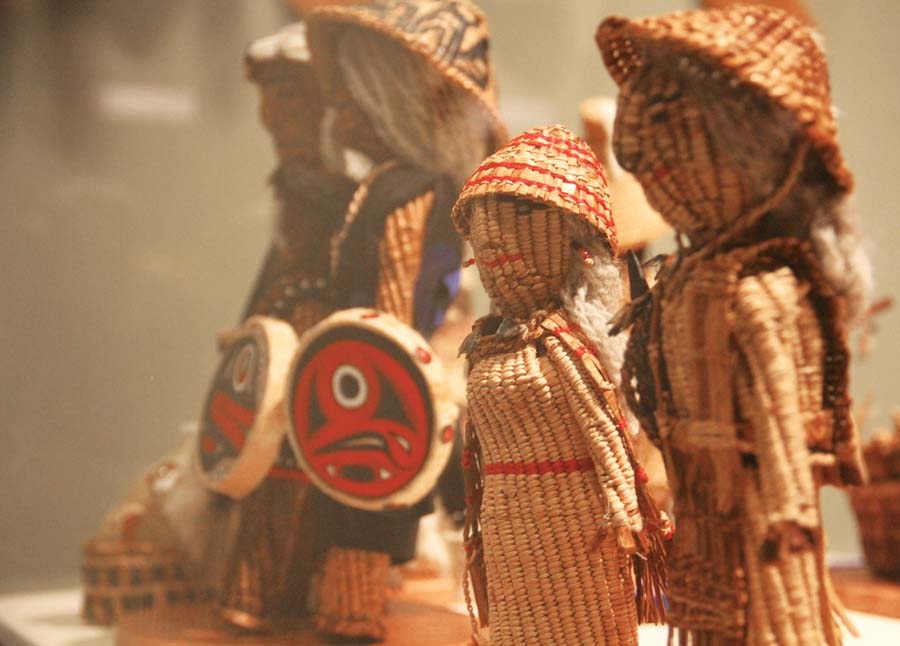
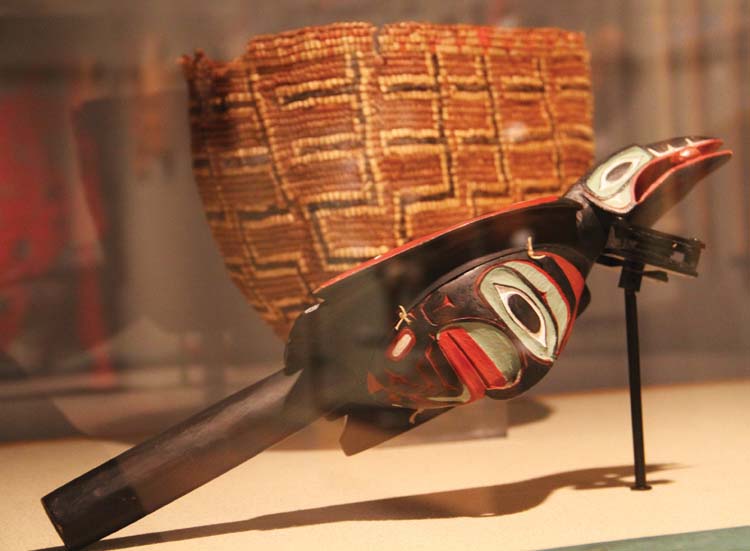
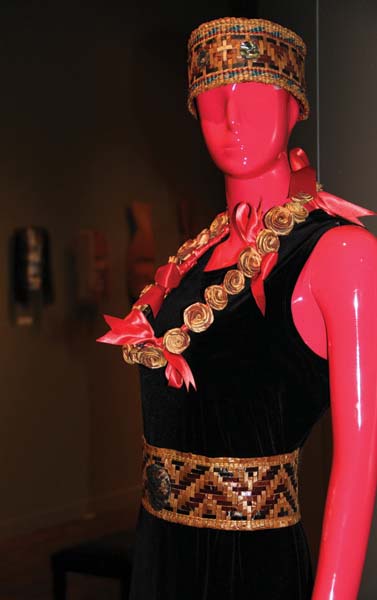
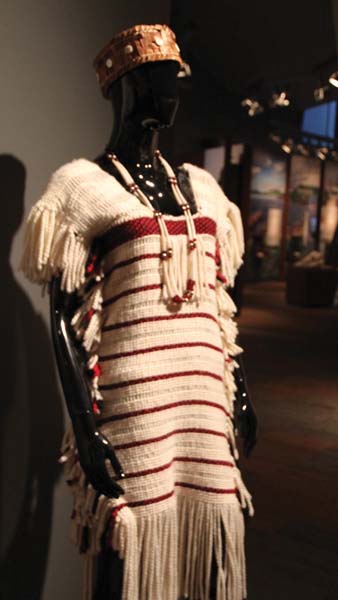
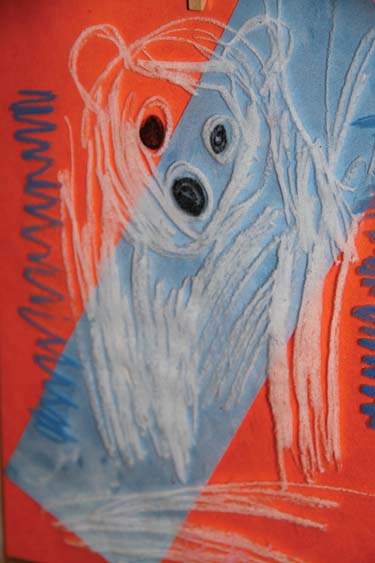

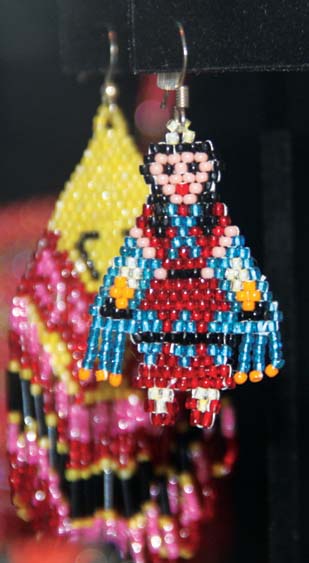
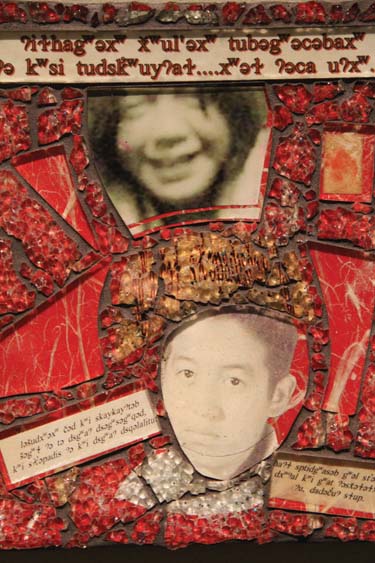
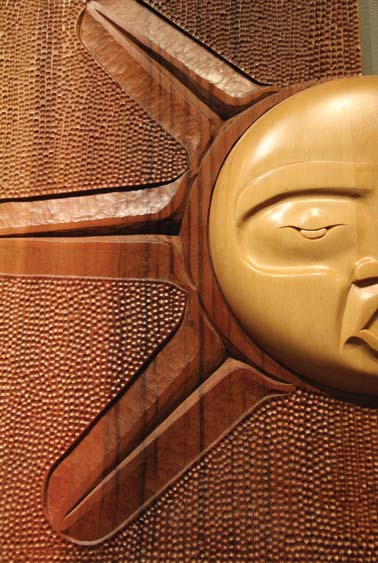




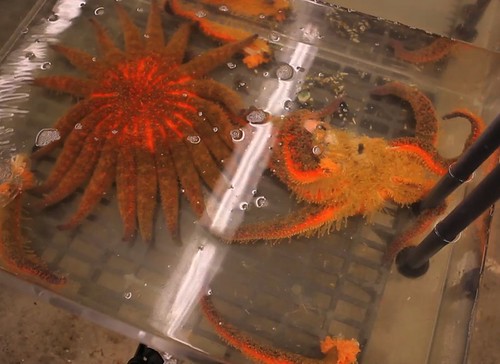
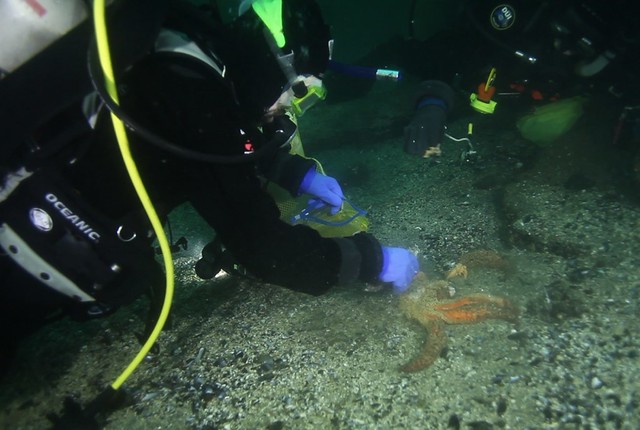
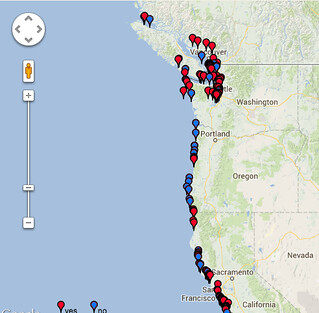
![The Intricate Beadwork of Jackie Larson Bread [10 Pictures]](https://www.tulalipnews.com/wp/wp-content/uploads/2014/01/jackie-bread-featured-50x50.jpg)




